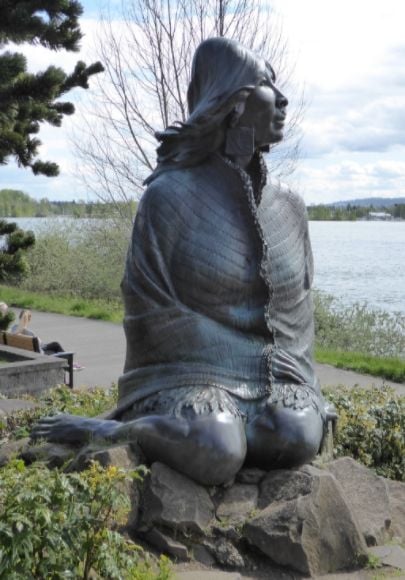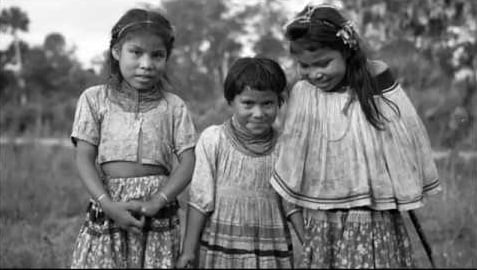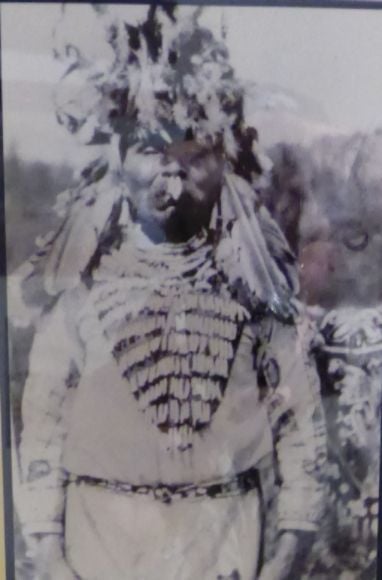The Fur Trade 200 Years Ago (1818)
During the first part of the nineteenth century, the fur trade continued to be an important area in the contact between American Indians and Europeans. During this time, beaver was of primary importance, driven in large part by European fashion.
 Shown above are two made beaver pelts on display in the Heritage Museum in Astoria, Oregon.
Shown above are two made beaver pelts on display in the Heritage Museum in Astoria, Oregon.  Shown above are some of the stylish European hats which were made from beaver.
Shown above are some of the stylish European hats which were made from beaver.
Through the fur trade, Indian people acquired European manufactured goods and Indian nations were drawn into the web of European markets. In an article in North Dakota History, Lauren Ritterbush writes:
“In North America, the fur trade was the commercial medium through which Euroamerican and Native cultures had their first contact, which in turn led to the opening of Indian lands.”
By 1818, two major companies dominated the fur trade: the Hudson’s Bay Company (HBC) and the North West Company (the Nor’westers). With regard to HBC, June Helm, Edward Rogers, and James Smith, in their entry in the Handbook of North American Indians, write:
“From the time of the initial royal charter in 1670, the Hudson’s Bay Company had held the legal governance and trading monopoly in a vast domain that had its maximum extent during the second quarter of the nineteenth century, when it embraced all of present-day Canada with the exception of the Great Lakes-Saint Lawrence Basin and the Maritime Provinces.”
 Shown above is the HBC Coat of Arms on display in the Heritage Museum in Astoria, Oregon.
Shown above is the HBC Coat of Arms on display in the Heritage Museum in Astoria, Oregon.  Shown above is the HBC flag on display in the High Desert Museum in Bend, Oregon.
Shown above is the HBC flag on display in the High Desert Museum in Bend, Oregon.  Shown above is a trader’s lean-to with trade goods exhibit. This exhibit is on display in the High Desert Museum in Bend, Oregon.
Shown above is a trader’s lean-to with trade goods exhibit. This exhibit is on display in the High Desert Museum in Bend, Oregon.
While HBC was owned and controlled by English investors with headquarters in London, the Nor’westers were based in Montreal and tended to be controlled by Scottish Highlanders who were actively engaged in the fur trade. Anthropologist David Morrison, in his book Profit & Ambition: The North West Company and the Fur Trade 1779-1821, writes:
“Wintering partners were the great majority, and were required to spend at least two winters out of every three in the Northwest, managing a remote post with the help of a clerk or two and a handful of voyageurs.”
The rivalry between the two fur trade companies was intense with armed clashes occurring at times.
There were also a number of American fur trading companies based in St. Louis. In an article in North Dakota History, W. Raymond Wood writes:
“Fur trade history, especially that of the St. Louis-based enterprises, is a complex story, complicated by the many companies involved, and by shifting business alliances that led to numerous dissolutions, mergers, and reorganizations of these firms between 1806 and 1867.”
Briefly described below are some of the 1818 fur trade events.
Donald Mackenzie of the North West Company organized expeditions in the Snake Country of eastern Washington, Idaho, and Wyoming . These expeditions included some Iroquois who had been brought in from the east.
In Oregon, Iroquois trappers employed by the North West Company got into a fight with the Kalapuya in which 14 people were killed. In his book Uncertain Encounters: Indians and Whites at Peace and War in Southern Oregon, 1820s-1860s, Nathan Douthit reports:
“This skirmish cost the company the good will of Willamette Valley Indians for a number of years, resulting in a reduction in the annual take of beaver pelts.”
Edward Ellice suggested to Andrew Colville of the Hudson’s Bay Company governing board that the North West Company purchase a controlling interest in the Hudson’s Bay Company to end the bitter conflict between the two rivals. Lord Selkirk, however, found this unacceptable.
In Alberta, the North West Company moved out of the Hay River area and blew up its trading post above Alexandra Falls.



